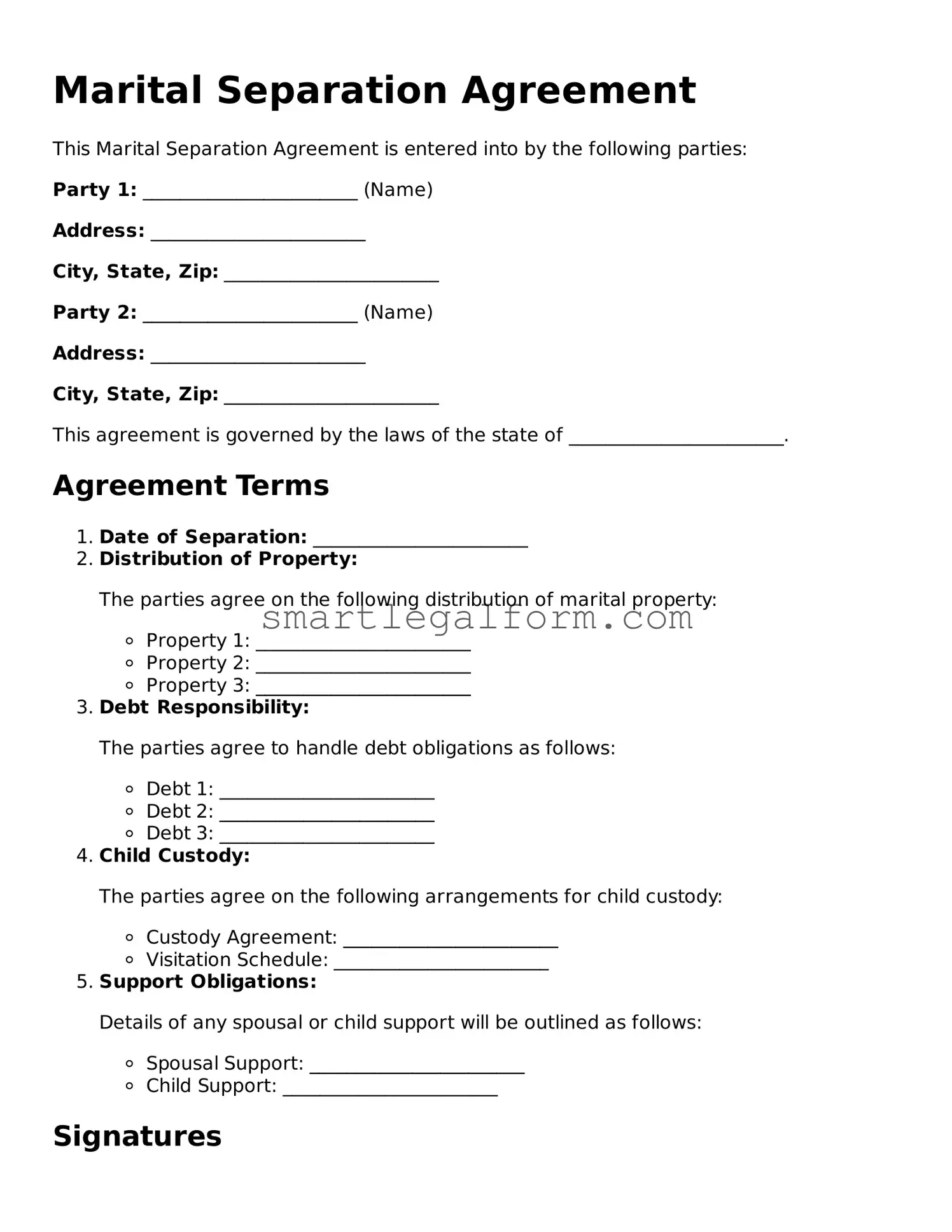Marital Separation Agreement
This Marital Separation Agreement is entered into by the following parties:
Party 1: _______________________ (Name)
Address: _______________________
City, State, Zip: _______________________
Party 2: _______________________ (Name)
Address: _______________________
City, State, Zip: _______________________
This agreement is governed by the laws of the state of _______________________.
Agreement Terms
- Date of Separation: _______________________
- Distribution of Property:
The parties agree on the following distribution of marital property:
- Property 1: _______________________
- Property 2: _______________________
- Property 3: _______________________
- Debt Responsibility:
The parties agree to handle debt obligations as follows:
- Debt 1: _______________________
- Debt 2: _______________________
- Debt 3: _______________________
- Child Custody:
The parties agree on the following arrangements for child custody:
- Custody Agreement: _______________________
- Visitation Schedule: _______________________
- Support Obligations:
Details of any spousal or child support will be outlined as follows:
- Spousal Support: _______________________
- Child Support: _______________________
Signatures
Both parties agree to the terms set forth in this Marital Separation Agreement and hereby sign below:
Party 1 Signature: _______________________ Date: _______________________
Party 2 Signature: _______________________ Date: _______________________
This agreement is intended to provide clear terms for the separation of the parties. It is advisable to seek legal counsel to understand individual rights and obligations before signing.
